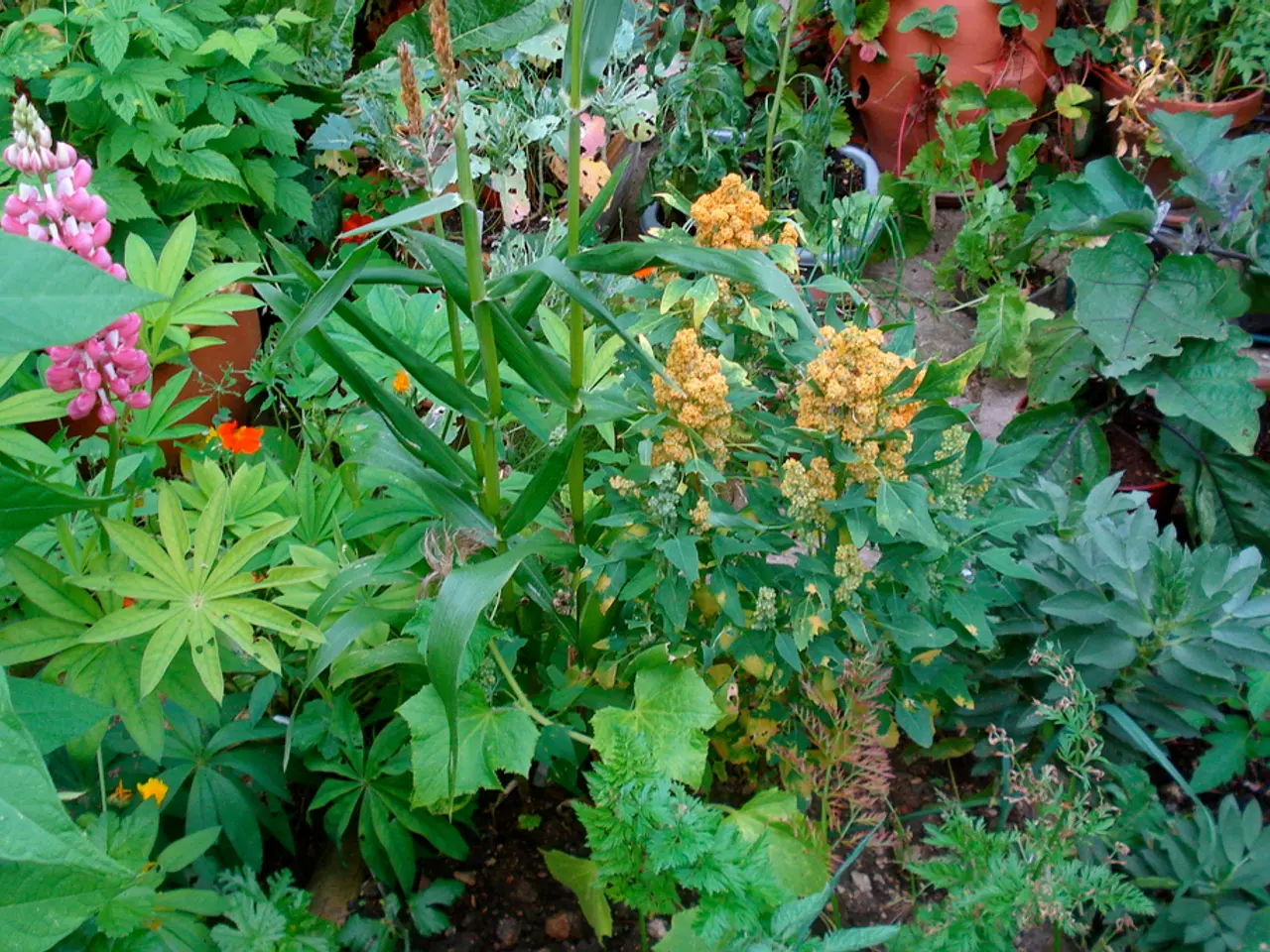Harvest your edible plants in May
May is a busy month for allotment enthusiasts, as the warmer weather encourages a flurry of activity in the garden. Here's a rundown of some key tasks to focus on this month.
Tomatoes
Tomatoes are ideally grown in a glasshouse or sheltered spot, but they can also be planted outside in May. Before planting, tomato plants are placed into a mixture of composted manure and chicken pellets, and the pots are removed from the roots. To ensure healthy growth, it's essential to stake the plants for support, water them before planting, and create a lower soil level around the base to allow for efficient water gravitation.
As the plants rapidly grow up their supports, early fruits may begin to appear. Consistent watering, feeding, and supporting the plants with canes or strings are crucial to ensure healthy growth and fruit development.
Strawberries
Strawberries often finish fruiting early in the season, and their harvest mostly occurs before or during May. To improve strawberry yield next year, tasks in May might include weeding around plants, ensuring they have enough moisture and nutrients, and planning for new plantings or runners to extend crops next year. To protect the crop from birds in summer, straw can be used to stuff under the plants and mulch the whole bed. Netting can also be used to cover the strawberry bed, with fishing weights or pegs and canes or poles securing it in place. However, care should be taken to avoid getting tangled.
Salad Leaves
Salad leaves such as lettuce and other leafy greens should be sown or grown during May as the soil warms up. They require consistent moisture, possibly some shading on hotter days to prevent bolting, and regular harvesting to encourage new growth and prolong the cropping. To ensure a continuous supply, salad leaves can be sown successionally every couple of weeks.
Other Tasks
Important jobs for a May allotment include regular watering and mulching to maintain soil moisture, sowing crops such as carrots, parsnips, beetroot, and radish, and managing the growth of existing plants like broad beans and pumpkins. May is also a key time to keep the allotment weed-free and to encourage beneficial wildlife, which helps the ecosystem.
For those looking to make their own fertilizer, a non-invasive 'Bocking 14' strain of comfrey can be grown behind the greenhouse. To make a comfrey concentrate, chopped up or bruised comfrey leaves are stuffed into a 3-liter drinks bottle with its bottom removed and turned upside down to make a funnel. The bottle is left to sit for a week or two, during which dark liquid drips from the bottom. This comfrey concentrate is rich in all main nutrients and can be added to watering cans at a rate of 10ml per liter to feed plants.
In summary, May tasks on an allotment prioritize watering/mulching, sowing root crops, supporting rapid-growing plants like tomatoes, managing strawberry harvest and care, and growing salad leaves with attention to moisture and harvesting. By following these tips, you'll be well on your way to a bountiful harvest this summer.
Delve into home-and-garden activities this May, and make the most of your allotment with a focus on gardening tasks. Incorporate diverse selections such as planting tomatoes, tending to strawberries, sowing salad leaves, and managing other crops. For a self-made alternative, consider growing a non-invasive 'Bocking 14' strain of comfrey as a no-chemical fertilizer solution.




